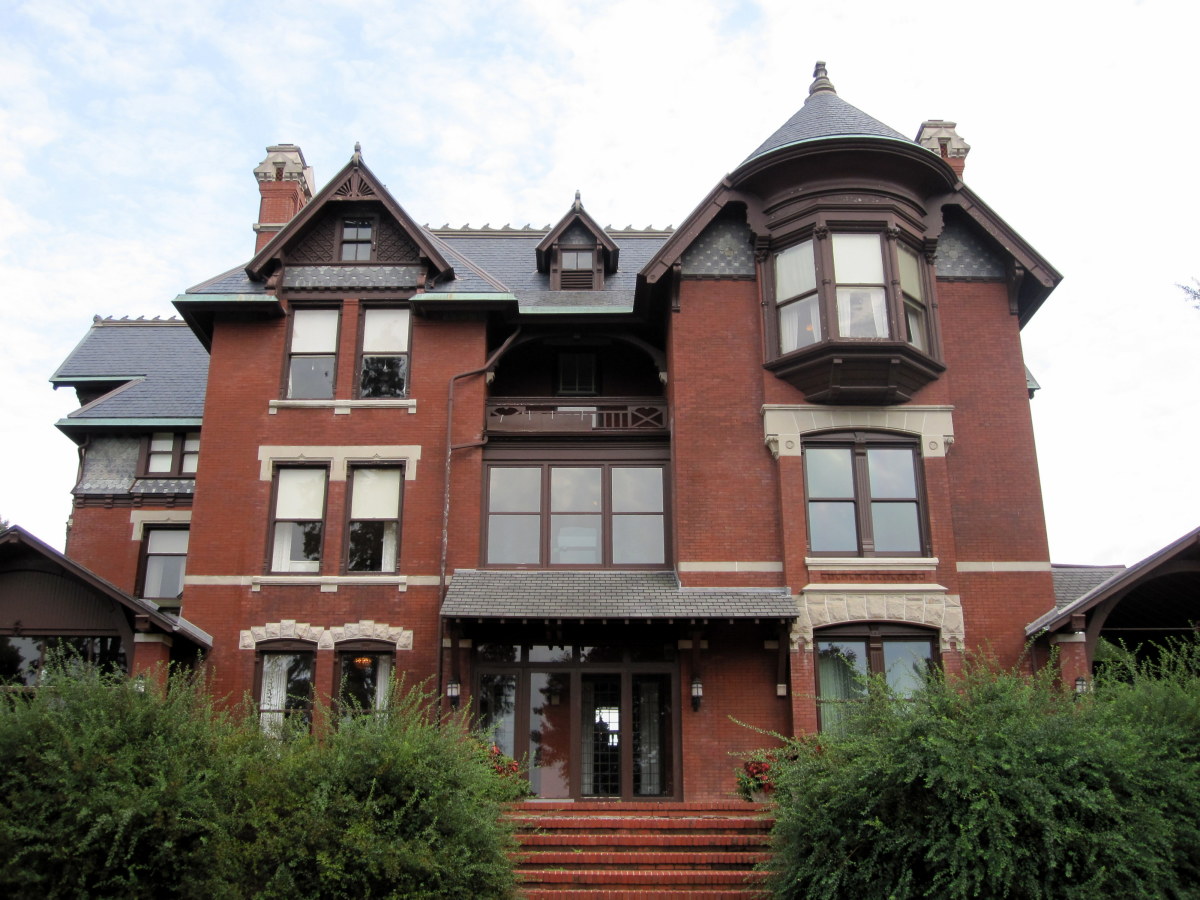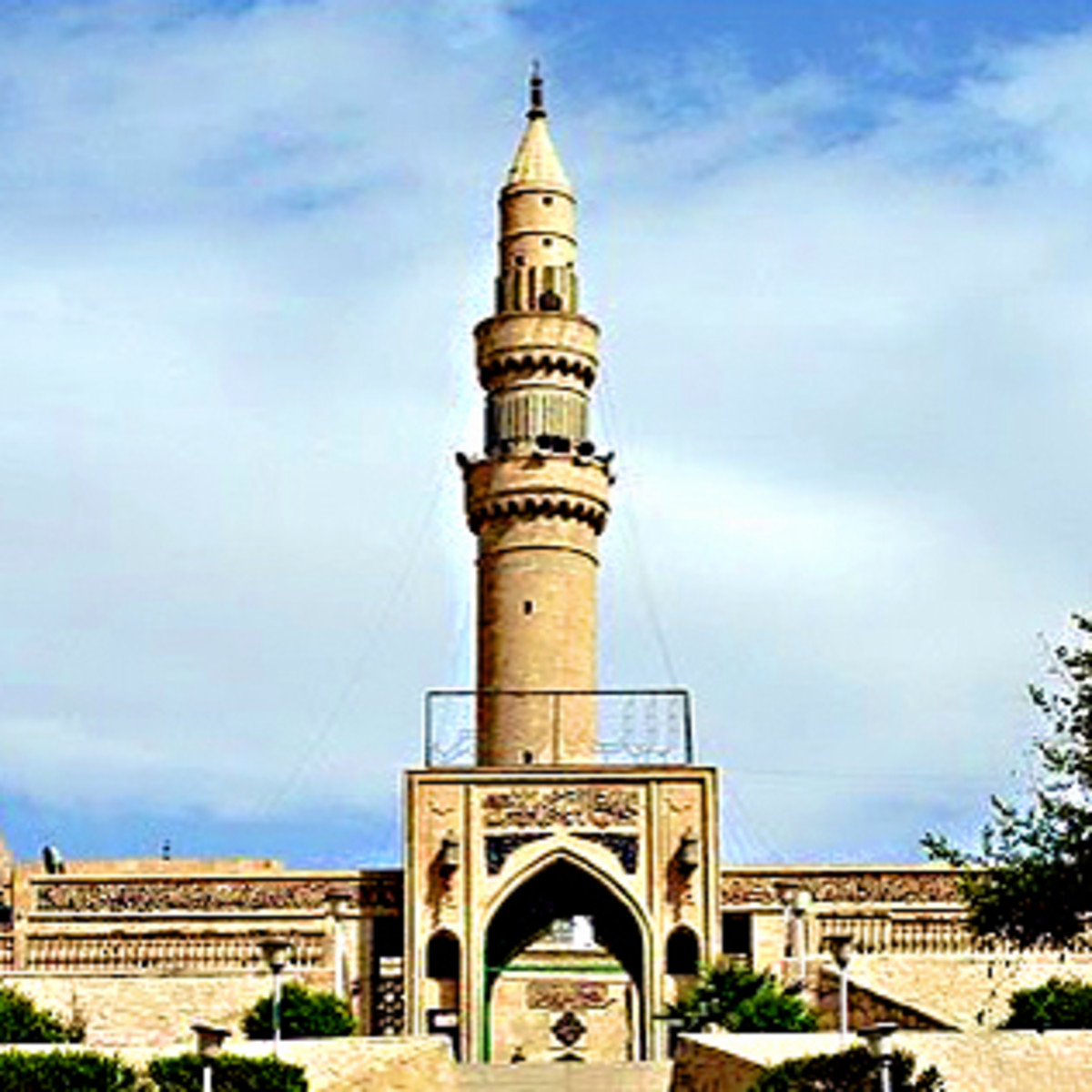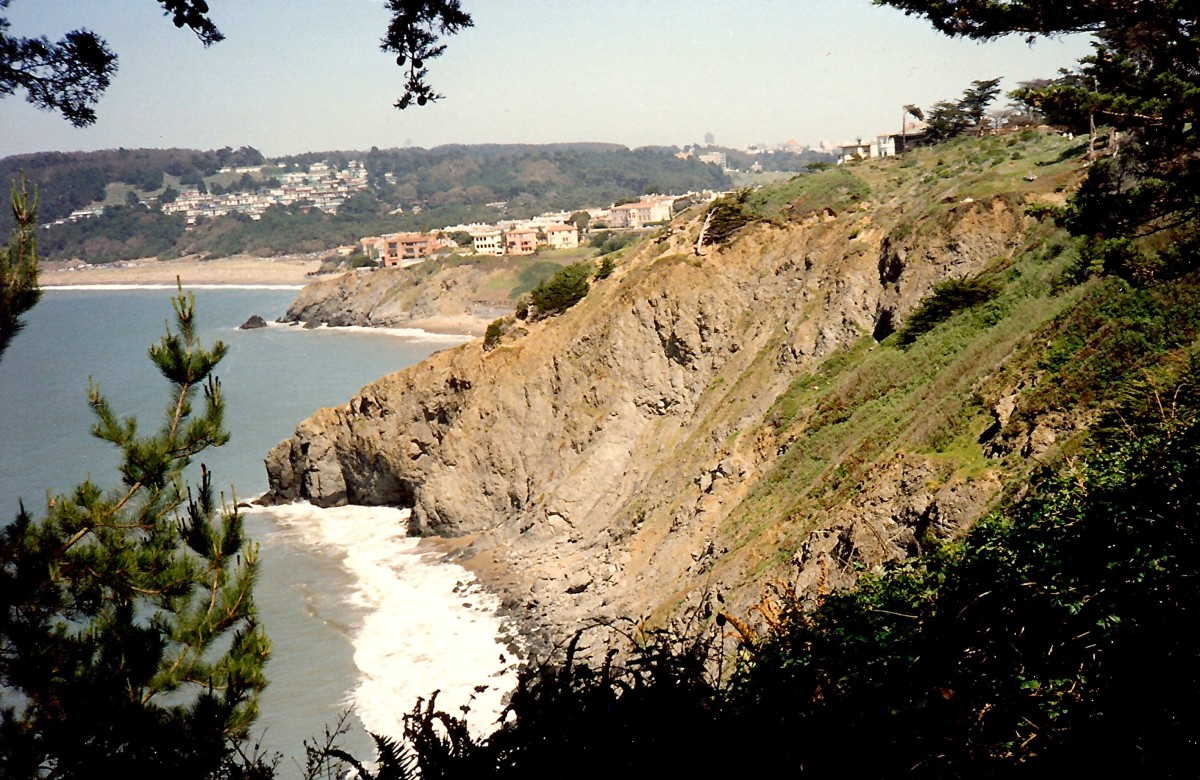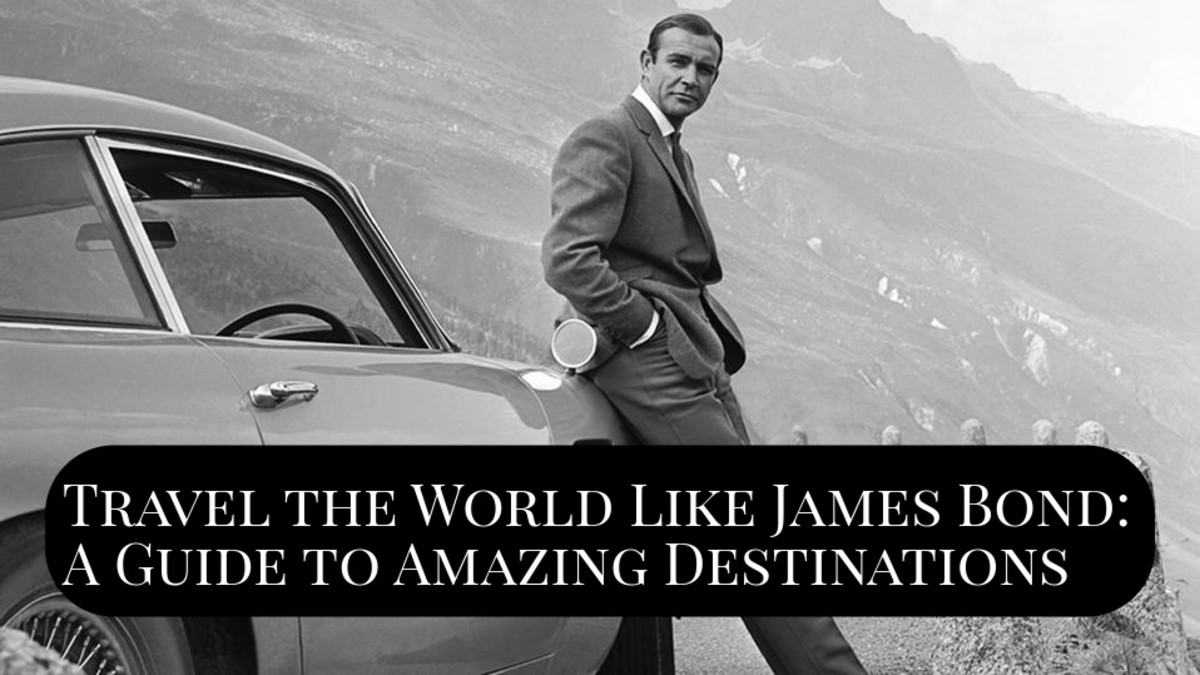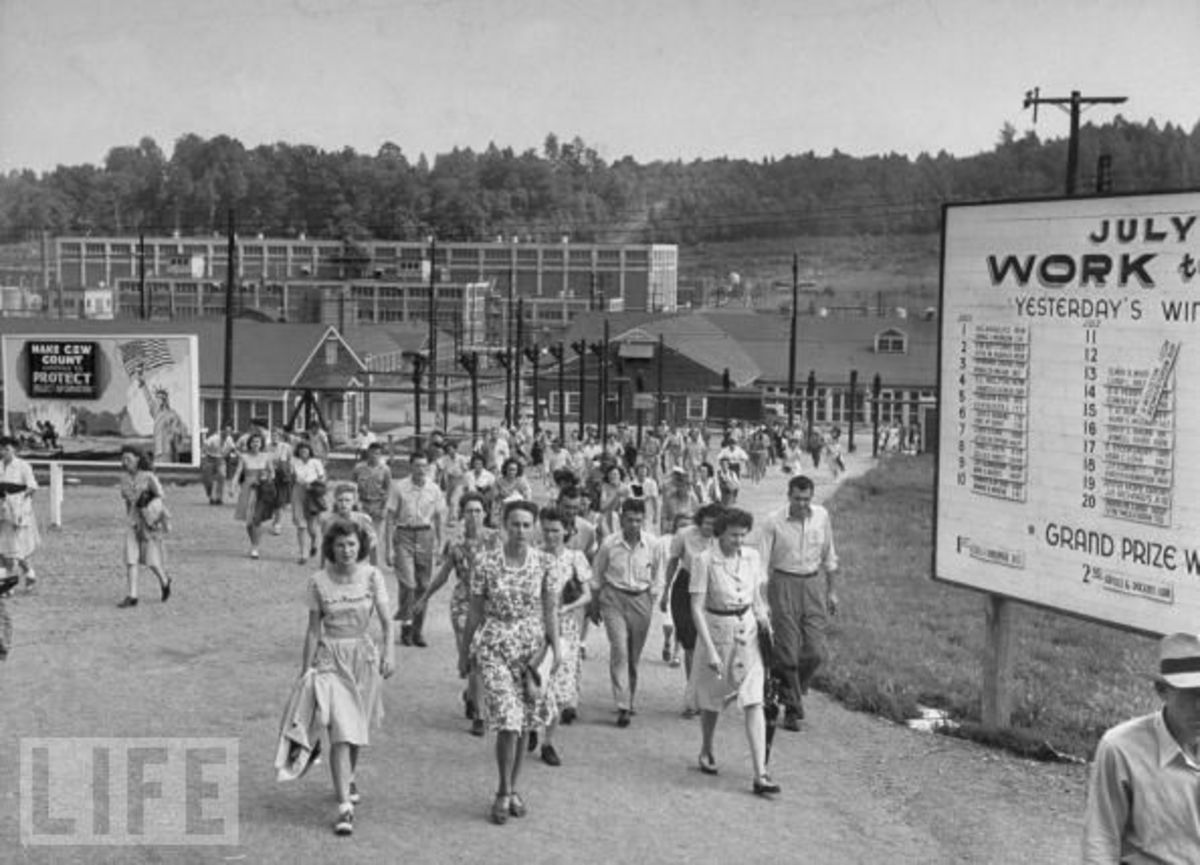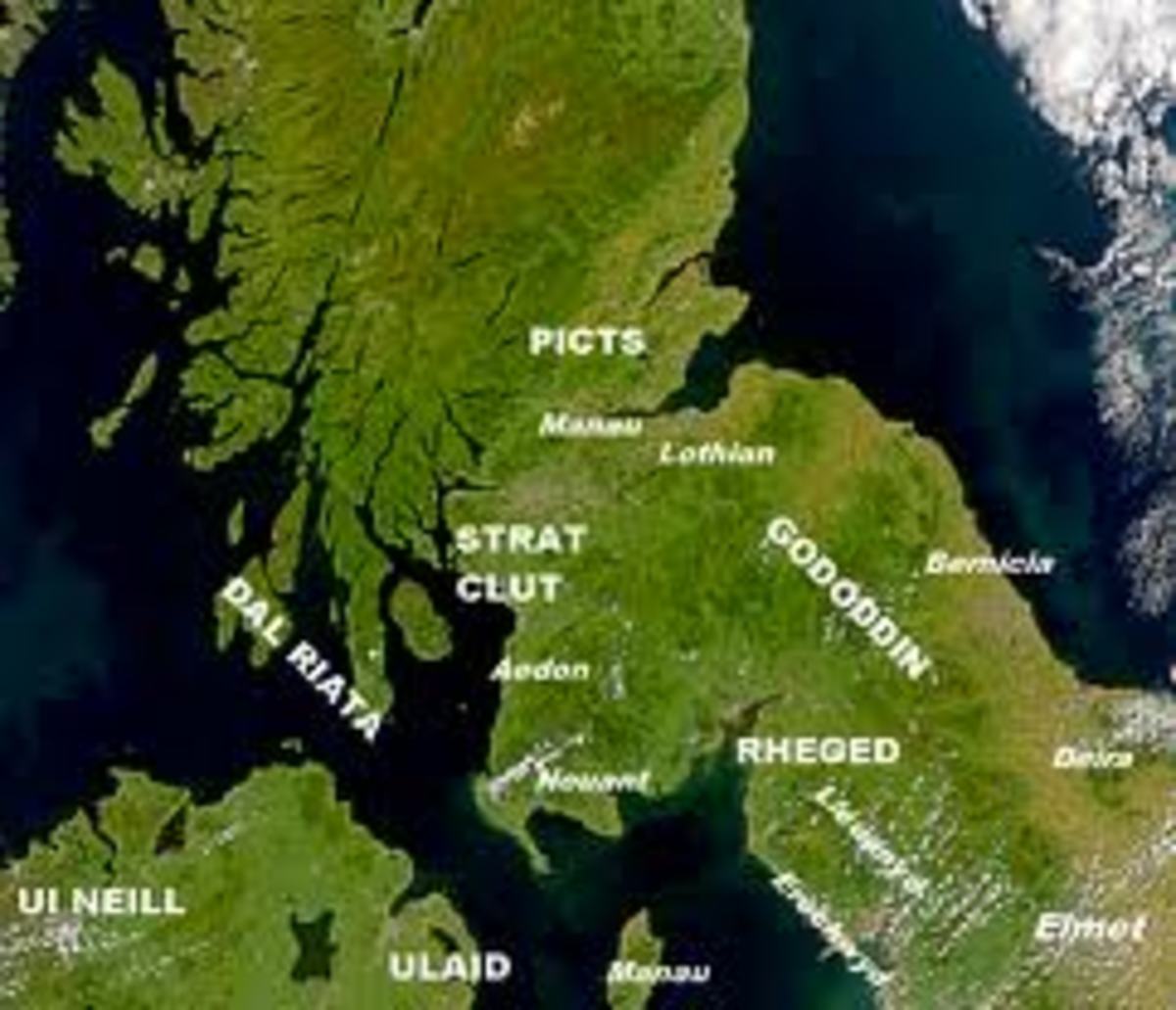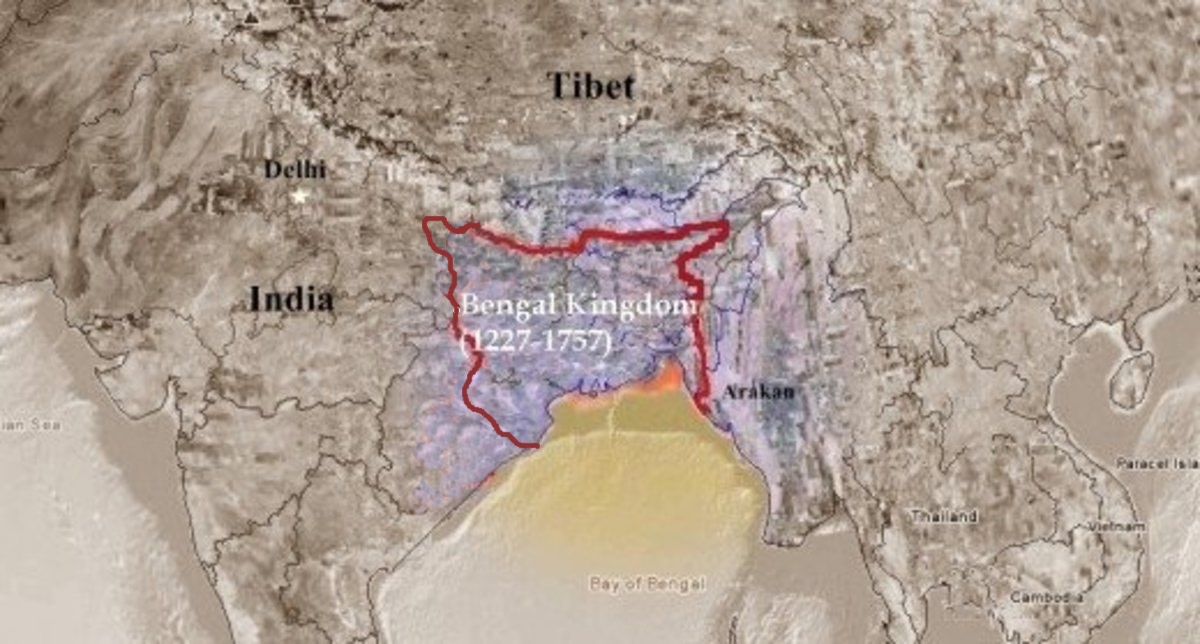San Francisco, CA Vs. Venice, CA: Or, How to Get Rich by Not Destroying Everything
The City on a Hill: San Francisco
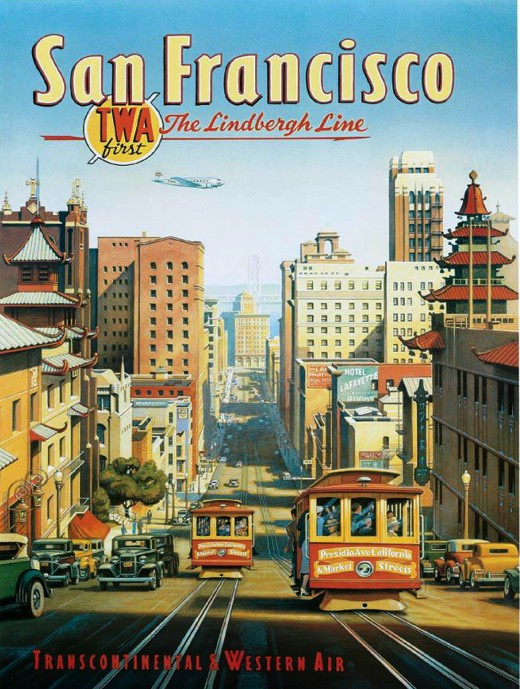
Historic Preservation, done two ways...
San Francisco, CA
Since 1873, San Francisco's cable cars have shuttled tourists and locals throughout the city - from Nob Hill to the Financial District and Fisherman's Wharf. When you think "San Francisco", you immediately think: Cable Cars and Victorians.
Here's a city where things were done right, largely due to the huge earthquake of 1906, when the city was basically rebuilt from the ground up. This means that the majority of all San Francisco's buildings were Victorian. But, the most important thing they *didn't* do? They didn't knock them all down in the name of Urban Renewal!
Venice, CA
Now let's look at Venice, California. What is it known for? Muscle beach, hippies, weirdos....The Doors....and? Many people don't even know that Venice, California was modeled after Venice, Italy, and at one point, was a breathtaking example of the ingenuity of one man, Abbot Kinney.
Before we begin, let's consider...
What do we lose when we knock down a building?
...Well, first of all, a sense of place. Beyond that, it almost always costs more to tear down a building than restore it. But the real tragedy comes with tearing down a Victorian house, for example. You will never be able to reconstruct it exactly as it was. Why? In that era, builders used termite-resistant virgin redwood (which is not even available today), hand-turned millwork, gingerbread, stained glass, a multitude of decorative moldings and hardware, and that's just a partial list.
— Jennifer A. EmmerThe Colonnade in Venice, California
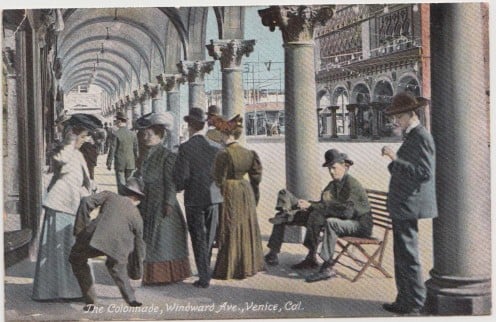
Venice Beach
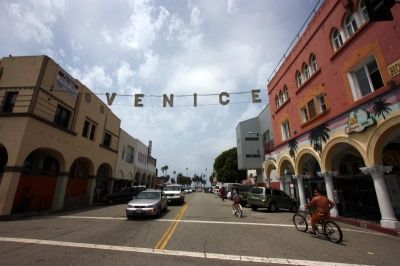
When you tear down a historic building...you destroy community, continuity, downtowns, tourism, and ugly, inappropriate buildings next to ones that have no soul
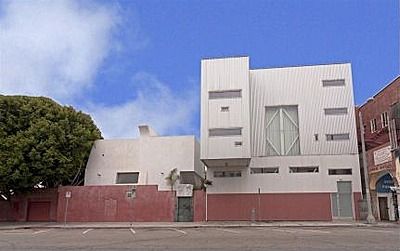
The Secret to Brilliant Cities
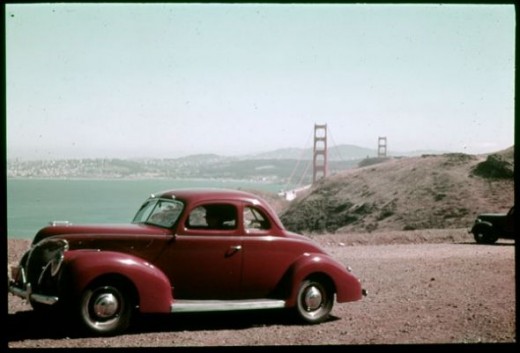
San Francisco, CA vs. Venice, CA
In this blog I am comparing two cities in California: San Francisco, and Venice. I hope to illustrate that honoring our "built past" fosters communities, provides aesthetically pleasing downtowns, as well as promoting tourism, and civic pride, just to start.
The point of this blog is not to wallow in our grievous mistakes, but to learn from them. It is also my hope that people who think that their one vote doesn't count, will see the importance of speaking up.
For an in-depth look at the real numbers, see Why Historic Preservation is Smart Growth
Ghirardelli Square: a big win for Adaptive Reuse
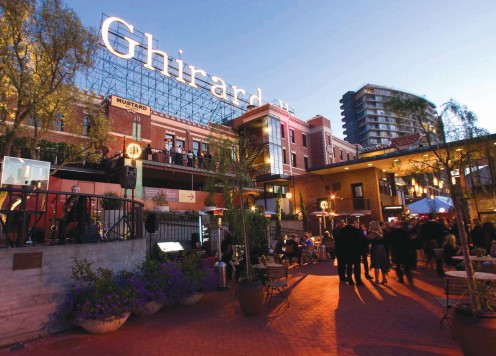
Preservation builds community
San Francisco's preservation movement began in the wake of the redevelopment frenzy of the 1950s and 1960s, when entire neighborhoods such as the Western Addition were leveled in the name of "urban renewal."
I can speak from experience when I say that residents in historic districts typically pull together as a community, empowering themselves to have a say in their neighborhood's growth. I live in a neighborhood of Victorians that has remained relatively unchanged since around 1895, at least architecturally speaking. I know all my neighbors, we are proud of our properties, we regularly socialize, and we also attend community meetings about our district because we care what happens to it.
Photo: Ghirardelli Square, a successful preservation project for San Francisco
San Francisco's Painted Ladies
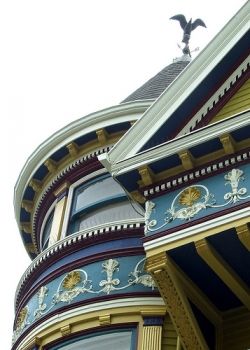
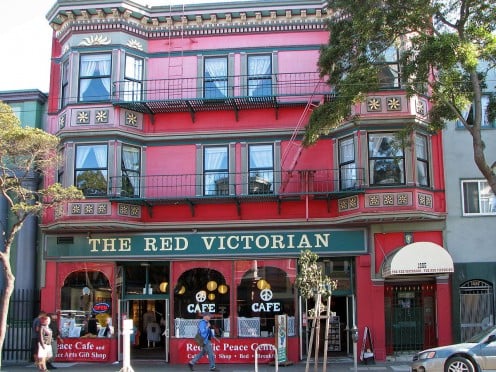
Preservation protects property values
Historic districts endure over time, and residents can rest in the knowledge that their neighbors will not undermine their buildings with completely out of scale or inappropriate development. Price stability in historic neighborhoods translates into longer owner tenure and enhanced neighborhood stability.
Adaptive reuse of historic buildings fuses art with craftsmanship, capacity for modern utility with embodied energy, and progressive ideas for economic revitalization with traditional authenticity.
Historic preservation is at the same time wonderfully egalitarian; all socioeconomic classes in every corner of the nation have successfully utilized its principles to protect their heritage and revitalize their communities.
Play up your unique features
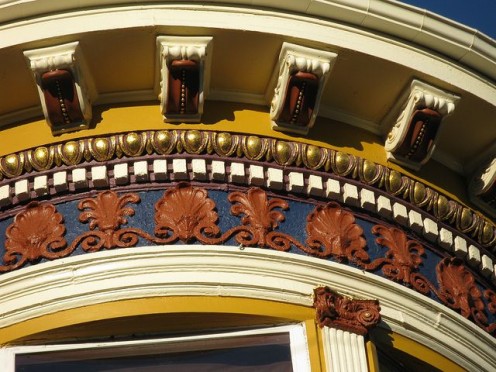
San Francisco has grown without sacrificing its distinct character
San Francisco's 1985 Downtown Plan rated 1,000 buildings historic and created incentives for their protection. It mandated 248 buildings as "significant" and established six conservation districts to preserve the scale and character of groupings of historic structures.
"The success of the downtown plan is illustrated by its influence on other cities and by the fact that San Francisco continues to have one of the best downtowns in the country."
Painted Ladies of Alamo Square
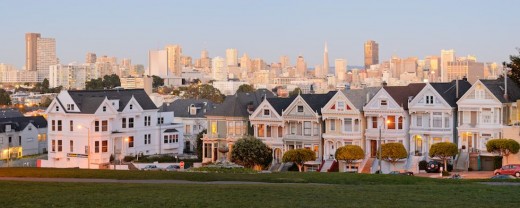
Preservation creates jobs
Rehabilitation projects are labor intensive, and they create more jobs than new construction, with 60-70% of rehabilitation expenses going towards labor costs. In new construction, roughly half of the expense goes towards materials. Dollar for dollar, rehabilitation projects create two to five times as many jobs as new construction.
Photo: Restoration of 1450 Sutter St, San Francisco
And now for the bad news...
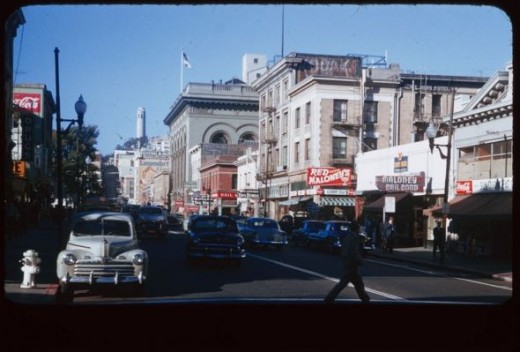
Urban Renewal: The City Gone Wrong
San Francisco did have a period of Urban Renewal, unfortunately. The main casualty of that was The Fillmore, now called "The Western Addition".
"It was only when the Redevelopment Agency began to acquire buildings, evict occupants, and demolish structures, and urban renewal became a living, frightening reality, that real participation of the area's residents began, as they organized to defend themselves."
- Chester Hartman, "City for Sale," University of California Press 2002
San Francisco's Black residents fought back in a valiant effort to stop the "urban renewal" they termed "Negro removal" in the Fillmore. But the Redevelopment bulldozers had their way. Redevelopment Director Justin Herman explained in 1970, "This land is too valuable to permit poor people to park on it."
"Urban Renewal" in San Francisco
For a great expos on this dark period of San Francisco's history, go to: Black Flight
For a photo essay of "The House Movers", who salvaged a bunch of Victorians from the Western Addition during this period: Dave Glass on Flickr
From the days of the Great Earthquake to the first stages of urban renewal to today, you'll discover the evolution of a neighborhood: Places of The Fillmore
For an unbelievable trip through San Francisco in the 1950s -1960s, check out @destroycreate's photo thread on skyscraperpage.com. He painstakingly went through about 1,700 photographs by famous Americana photographer Charles W. Cushman. He chose what he thought were the best and most relevant pictures. Truly stupendous. Skyscraper Page
Alamo Square: One of San Francisco's Prime Attractions
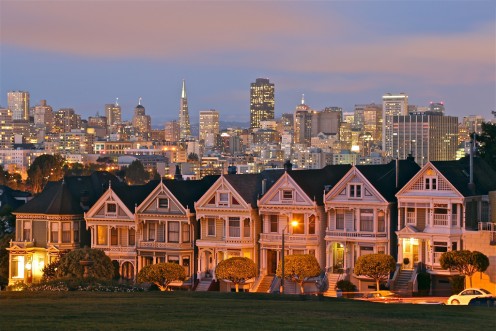
Historic sites rank high among San Francisco tourists
In a new survey released this week by the San Francisco Travel Association:
Cultural travelers rank the City's "historic buildings and architecture" as the number one attraction
In the City's multi-billion dollar tourism industry, historic resources such as the Golden Gate Bridge, the Ferry Building, Alcatraz, Golden Gate Park, and all the beautiful Victorians are among the top ten most visited sites.Cultural travelers stay longer and spend more than other kinds of tourists, and therefore make a hefty contribution to local hotel and restaurant taxes.
Photo, Above Right: Victorian rowhouses in the Haight-Ashbury neighborhood of San Francisco at 710-720 Steiner Street, across from Alamo Square park.
It really goes without saying...
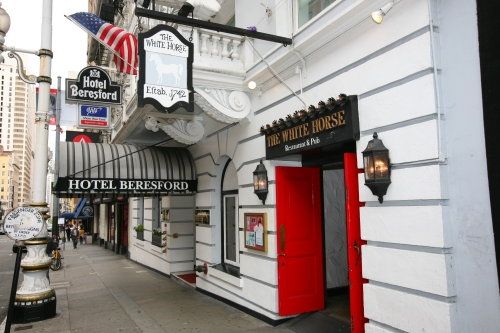
San Francisco's history draws in the tourists
San Francisco's biggest draw is its history.
Today, San Francisco is a popular international tourist destination, renowned for its chilly summer fog, steep rolling hills, eclectic mix of Victorian and modern architecture, and its famous landmarks, including the Golden Gate Bridge, cable cars, and Chinatown. The city is also a principal banking and finance center, and the home to more than 30 international financial institutions, helping to make San Francisco rank eighteenth in the world's top producing cities, ninth in the United States, and thirteenth place in the top twenty global financial centers.
It's a pretty good argument for saving your architectural treasures...
Compare and Contrast: Venice, California...
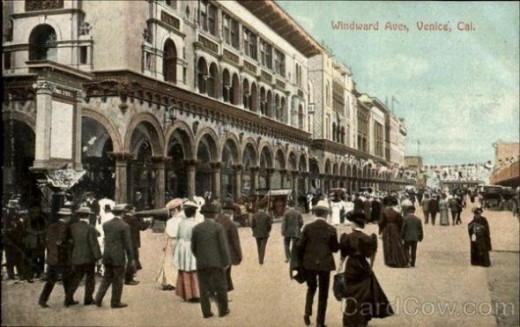
Abbott Kinney
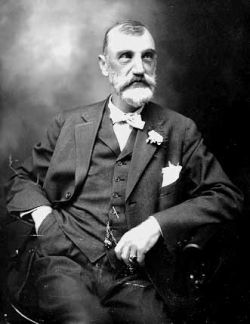
"Venice of America"
Abbot Kinney's Vision
This particular injustice is especially painful for me, as a former resident of Venice, California. Living one block from the ocean, I am well acquainted with the love affair Abbot Kinney had with the former marshlands in Southern California. We would often stroll along the (remaining) canals, and wonder about the strange street names. Street names such as "Coral Canal", "Lion Canal" and "Grand Canal". Being the history buff that I am, I started investigating Venice history.
What I discovered was not only horrifying in its tragedy, but perhaps even more so in the fact that current Venice residents have virtually no clue about the history of their majestic city.
Abbot Kinney (b. 1850, New Brunswick, New Jersey - d. 1920, Santa Monica, California) was a developer, conservationist and a visionary. At the age of 16, Kinney traveled to Europe where he studied in Heidelberg, Paris and Zurich. He became fluent in six languages. During his last few months there he took a walking tour of Italy, and in particular, Venice and the Italian Riviera.
Kinney's world travels eventually brought him to San Francisco in 1880. He adored the health aspects of California. By 1891, Kinney had migrated south, where he and his partner bought controlling interest in Pacific Ocean Casino and a tract of land 1 1/2 miles long and 1,000 feet wide along the Santa Monica beach. His partner died, and his widow's new husband sold the interest to a group of men Kinney did not get along with. With a flip of a coin, which Kinney won, Kinney took the marshy southern half to build a seaside resort like its namesake in Italy - a "Venice of America".
Boating on the Canal, Venice, California
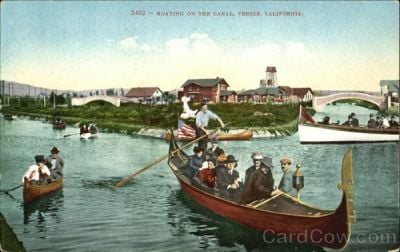
The Colonnade, Venice, CA
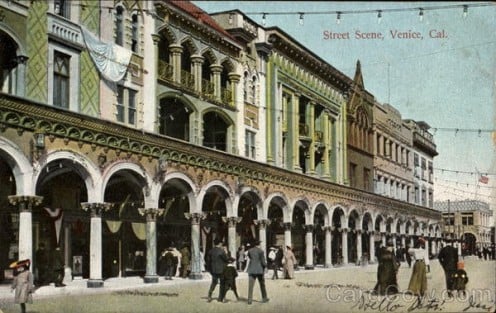
Work begins
Work on the canals began in July, 1904. Kinney, unsatisfied with the speed of progress, hired the Hall Construction Company in November to use a steam dredge to complete the two miles of waterways. Residential lots were offered for sale on November 12th. The St. Mark's Hotel on Windward broke ground on December 5th.
Kinney hired Architects Marsh and Russell to design the principal buildings in Venice, which were built in a "Venetian Renaissance" style, featuring enclosed colonnaded walkways.
The Pacific Electric "Short Line" From Los Angeles to Venice
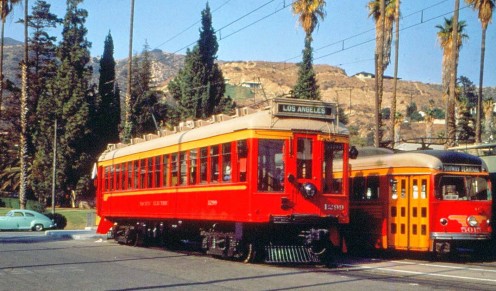
The Pier
In September, 1904, building began on Kinney's Ship Cafe and Auditorium, located on the pier, plus four business structures on Windward Avenue. At the same time, The Los Angeles Pacific completed its Short Line electric trolley to Venice.
Unfortunately, Abbott Kinney's first pier design was never even used, because the winter storms of early 1905 totalled it. 1000 laborers were set to work around the clock to rebuild in time for the rescheduled July 4 opening. 1200 feet long (a hundred feet had been added in the revised plan), the pier was rebuilt at the foot of Windward Ave.
The pier held the Auditorium, the Dance Pavilion, the Funhouse, the Virginia Reel, a tea garden,a zoo, a roller rink and a bowling alley, as well as attractions and vendors' stalls. There was an Aquarium, and a stand that sold fresh fish. An American Indian village was touted as "life in a teepee," and sold arts and crafts. At one early pier concession, a French woman would embroider your initials on a lace-trimmed hankie. In 1915, entrepreneur Louis Klein built a concession that represented the sinking of the Lusitania, which opened only days after the event took place.
The Venice Pier off Windward Ave
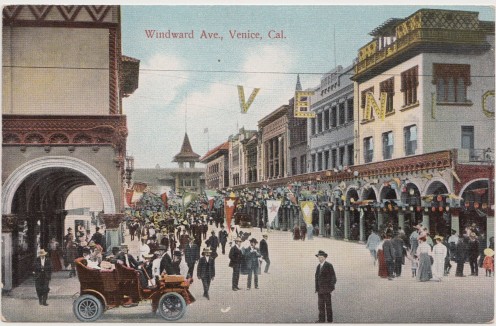
Venice, California: Shining Star on the Pacific
When Venice of America opened on July 4, 1905, Kinney had dug several miles of canals to drain the marshes for his residential area, built a 1200-foot-long pleasure pier with an auditorium, ship restaurant, and dance hall, constructed a hot salt-water plunge, and built a block-long arcaded business street with Venetian architecture.
Venice Beach
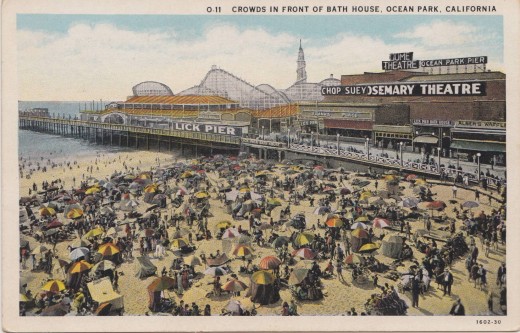
Venice tourists
Tourists, mostly arriving by trolley from Los Angeles and Santa Monica, rode Venice's miniature railroad and gondolas to tour the town. But the biggest attraction was Venice's mile-long gently sloping beach. Cottages and housekeeping tents were available for rent.
The Venice Canals
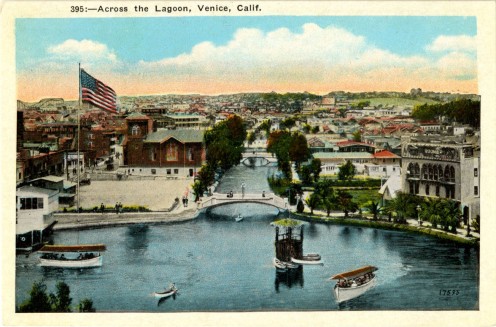
Canals and Gondolas!
Visitors were dazzled by the system of canals complete with gondolas and gondoliers brought in from Venice, Italy. Eventually Kinney gained control of city politics and had the name changed from Ocean Park to Venice in 1911. Kinney was also allowed to build a 60 foot breakwater to protect his facilities from ocean storm surfs.
The Venice Dance Hall on the pier, 1921
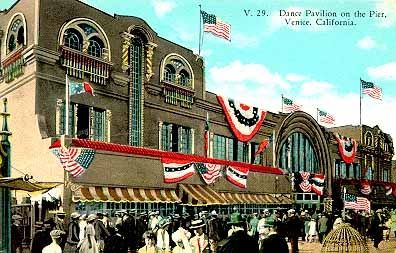
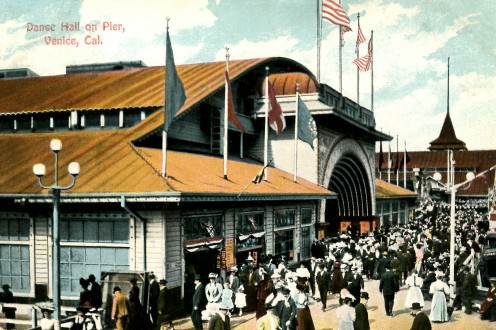
Abbott Kinney's demise
Kinney eventually expanded his resort facilities by enlarging his pier to become a full fledged amusement pier. He also gained control of the city's politics and changed its name from Ocean Park to Venice in 1911. Kinney was the "Doge of Venice". The saddest part was that Abbot Kinney was really only able to enjoy his masterpiece for about 10 years before falling into ill health.
His wife Margaret died on June 30, 1911. She was only 46 years old. Abbot didn't have a close relationship with his wife in later years. It was an open secret that he actually lived in nearby Santa Monica with his mistress Winifred Harwell and had two illegitimate children, Clan (born 1904) and Helen (born 1906). He eventually married her in 1914 and officially adopted both children.
Kinney built a new home along the canals next to the lagoon and lived there until he contracted lung cancer from smoking cigarettes). He died on November 4, 1920 after collapsing and becoming bedridden in late October. He was buried at Woodlawn Cemetery in Santa Monica beside his wife Margaret. His eldest son Thornton took over the family business.
Saint Mark's Plaza, Venice, California
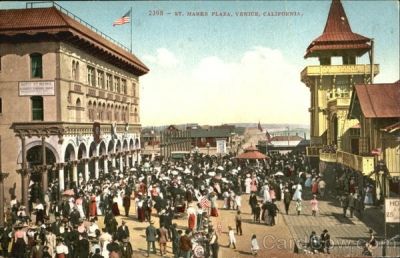
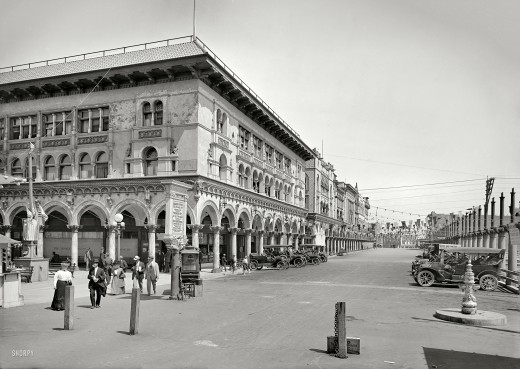
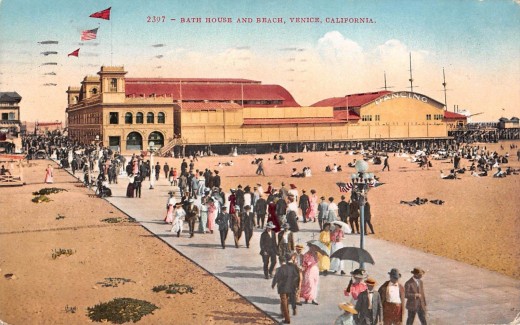
The Beginning of the End
A few days before Christmas in 1920, a devastating fire wiped out the Pier. Fortunately, Abbot Kinney did not have to bear the sight, having died a month and a half earlier. The Giant Dipper was the only thing to survive. Of course the Pier was rebuilt yet again, with attractions that focused less on art and culture, more on lowbrow fun and commercialism. The Auditorium was not rebuilt. Although the new pier opened for business on May 28, 1921, the official opening was held later, on the 4th of July.
Filling in the Canals
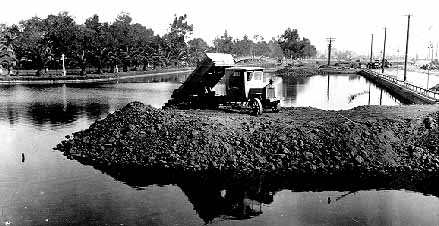
The Dark Days
Abbot Kinney had governed Venice with an iron hand and that's why the town flourished. When he died in November 1920, Venice became harder to govern politically. Tragically, the amusement pier burned six weeks after his death, in December 1920, and combined with Prohibition (which had begun the previous January), the town's tax revenue was severely affected.
Meanwhile, the twenty-year-old canal network was expensive to maintain and did not always flush as intended.
In 1922 Venice's city treasurer, James Peasegood absconded with $22,000 in city funds (about $250,000 in today's dollars). Although he ultimately returned the loot, his action was a symptom of a city that had become ungovernable. The desperate citizens of Venice had had enough. They voted to join the City of Los Angeles. Little did they know what this would do to their fair city.
The spring of 1924 brought the dawn of the darkest day in Venice history. A new administration was ushered in, and with it, a hysterical thrust for "progress". Suddenly, the canals were seen as a romantic throw-back to the past. Even the Venice Vanguard newspaper was advocating progress. Talk was afoot of filling in the beloved canals, to make more roads, for the ubiquitous cars.
The canal property owners, in horror, banded together, and went to court. Although they were able to stall the destruction of the canals, finally in 1925, Venice become part of the city of Los Angeles. This was the final death knell for the canals.
The L.A. City Council announced their decision to fill in the canals during the summer of 1928. They claimed that only 62 people out of 7500 property owners in the assessment district protested.
There was one catch. Since the canals had been dedicated to Venice by Abbot Kinney, with the condition that they be used "solely and only for permanent waterways and canals free to the public forever", the board feared (with good reason) that if the canals were filled in they would revert to the Kinney heirs.
Venice Lagoon, Before
Venice Lagoon, Before
Despite a gala three day canal filling celebration attended by five thousand residents and the Governor, the summer of 1929 proved to be one of the most ill-thought catastrophic events in California history.
Venice Lagoon, After
Venice Lagoon, After. Asphalt. Just like every other unremarkable street in Los Angeles.
"It was almost directly in front of the postmaster's house that an angry crowd of over a hundred jumped into the drained canal and started shoveling the dirt out almost as fast as the contractor's crew could fill it in.
Nonetheless work was completed before the end of the year at a cost of $636,205.85. Nearly 90,000 cubic yards of dirt was trucked in, rolled flat and covered by a seven inch layer of asphaltic concrete."
Ironically, the beginning of the Depression was the only thing that saved Venice's remaining canals.
Jack Kerouac
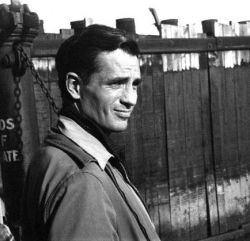
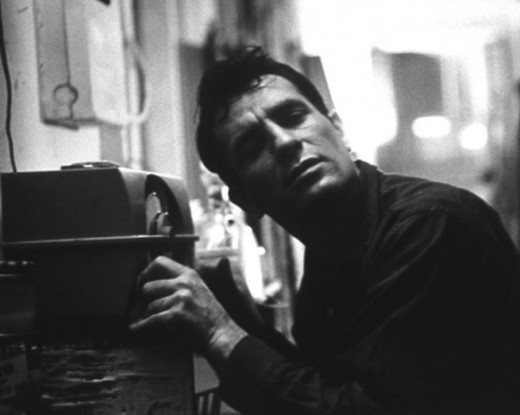
Urban Renewal: A Disaster
In the 1930s a Chinese junk, the Ning-Po, staffed by costumed Chinese, was tied up next to the Pier. There was a Coal Mine attraction, and something called the Skooter, along with of course many other things to see and do. After the official closing in the spring of 1946, this incarnation of the Pier burned also, in 1947, while in the process of being torn down. In the 1950s, all remaining vestiges of the Pier were removed from the beach.
World War II brought nighttime blackouts, putting an end to "after dark recreation" along the coast. After the war, the city of LA closed the Venice Pier. In the 1950s a new group of residents moved into Venice attracted by cheap rents and local tolerance of their unconventional lifestyles. Writers like Jack Kerouac and Charles Bukowski called Venice home. The beat generation hung out at the Gas House and Venice West Caf where they held poetry readings and listened to jazz or folk. LA's heavy hand welcomed the new arrivals with vice raids, drug arrests and fire department citations for overcrowded bars and coffee houses.
Venice in decay
By the mid-sixties Venice was in a state of decay. LA recognized a need for urban renewal but went about it the wrong way, instituting a policy where all buildings had to be upgraded to current building standards or face demolition. Hundreds of building were torn down — 550 of them historic — before a lawsuit halted Venice's mass destruction. For a while locals described the community as "where the debris meets the sea."
In Closing...
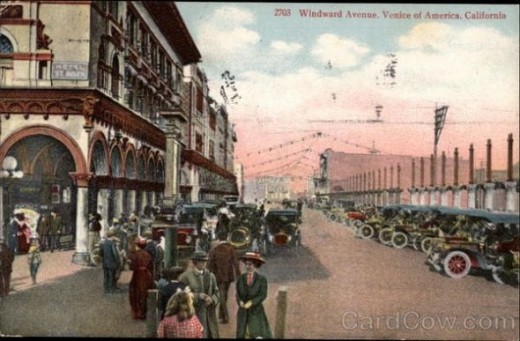
If Venice had remained intact....
Venice, California, if it had remained intact, would undoubtedly rival San Francisco for tourism and popularity. There were several bad decisions along the way.
- Probably the most significant was annexing the city to Los Angeles. There's only one other city in the world like it: Venice, Italy. If a city has a unique quality that simply cannot be recreated, it needs to be saved at all costs.
- It was a seriously misguided move to mow down 550 historic buildings at once, in the name of "Urban Renewal". If these buildings had been adapted for reuse, the historic core of Venice would remain today.
- Another problem was the automakers luring people off the public transportation system, and into their cars. If the automobile hadn't become such a behemoth in Los Angeles, the canals would never have been filled.
The destructive effects of automobiles are much less a cause than a symptom of our incompetence at city building
— Jane Jacobs, 1961I *almost* have to chuckle at the above quote. It's not always that we are incompetent at city building. Sometimes, we get it just right.
Then we bulldoze it.
— Jennifer A. Emmer, 2013View looking inland along Pier Avenue, 1908
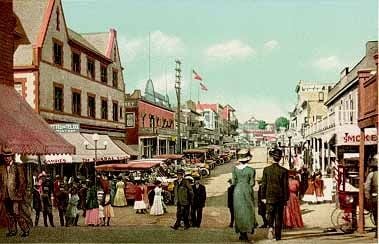
Venice Canals, as they appear today
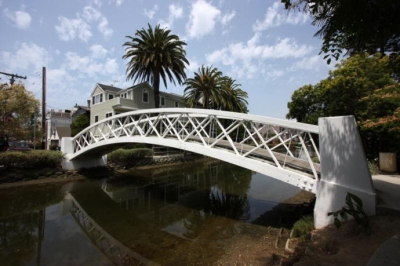
Venice Pier and Navy Beach, Venice, CA
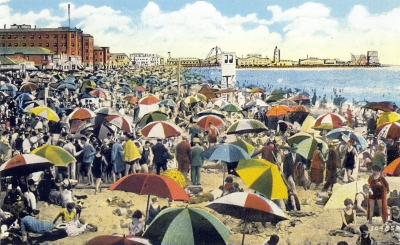
Show us some love
Please take a moment and go back to the top of the page and show us some Love or Share on your favorite website. Thanks for stopping by!
Links of Interest
- Beautiful Buildings
A blog about Beautiful Buildings - ones we've saved, ones that are threatened, ones that have been restored, ones that are gone - it's all here. If you know of a threatened historic building, please email us at "preservation@usa.com". - Get Rich by Saving Old Buildings (Or, why is Historic Preservation so smart)....
"One might be tempted to compare the recent green wave with the rise of modernism more than a half-century ago. Planners and architects back then didn't just want buildings to look different; they also wanted to change the direction society was heade - Top Ten Gone but not Forgotten in New York City
Top Ten Architectural Masterpieces that are gone, but not forgotten in New York City. Plenty of photos and links of interest.
Historic Preservation on Amazon


